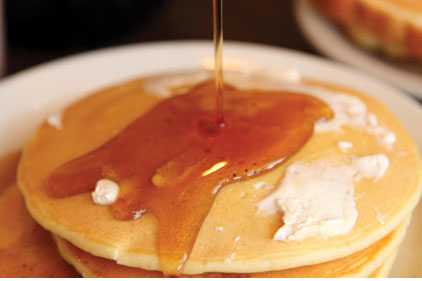1. What are the misunderstandings associated with HFCS that you would like to clarify?

|
High-fructose corn syrup (HFCS) has been used for decades as a safe, economical sweetener with many superior functional benefits in a wide range of food and beverage products. In 1983, the U.S. Food and Drug Administration (FDA) formally listed HFCS as safe for use in food and reaffirmed that decision in 1996. Additionally, the FDA staff has stated HFCS meets its requirements for use of the term “natural.”
In a 2004 commentary, Barry M. Popkin, Ph.D., and George Bray, M.D., suggested HFCS could be uniquely responsible for obesity. However, Popkin has twice retracted the hypothesis, and the vast weight of credible scientific authority shows HFCS is nutritionally and metabolically the same as sucrose.
For example, the American Dietetic Association has stated HFCS “is nutritionally equivalent to sucrose. Both sweeteners contain the same number of calories (4Kcal/g) and consist of about equal parts of fructose and glucose. Once absorbed into the bloodstream, the two sweeteners are indistinguishable.” (Hot Topics, “High Fructose Corn Syrup,” December 2008. See http://tinyurl.com/3zjqbl3)
2. What are food and beverage marketers and consumers’ perceptions about HFCS?
Many marketers are overestimating consumer opposition to HFCS. A new market research study conducted in April 2011 by Mintel, with over 2,000 primary grocery shoppers, indicates HFCS is not a “top of mind” consumer issue. When consumers were asked (unaided) what ingredients they were looking to avoid, Mintel found only 4% of respondents indicated they were looking to avoid HFCS.
In the same question, 17% of consumers said they were trying to avoid “sugar or added sugar;” 37% indicated they were avoiding calories; while 20% were avoiding fats and oils.
Among label-reading consumers, only 3% indicated they were looking for HFCS. By contrast, 25% were reading labels for “sugar or added sugar,” 38% for fats and oils, and 37% looked for calories.
3. Is HFCS high in fructose compared to other sweeteners?
No. Despite its name, HFCS is not higher in fructose than table sugar (sucrose) or other caloric sweeteners. Both HFCS and sucrose are composed of approximately half fructose and half glucose. The name HFCS was intended to distinguish it from corn syrup, an ingredient composed primarily of glucose and used as a non-sweet thickener to soften texture, add volume, prohibit crystallization and enhance flavor in some products. Many food and beverage products contain a type of HFCS that is 42% fructose--the lowest fructose-containing caloric sweetener on the market.
4. What are the most recent scientific findings regarding HFCS vs. table sugar?
One of the most interesting recent study abstracts was presented by James M. Rippe, M.D., at the 2011 meeting of the Federation of American Societies of Experimental Biology (The FASEB Journal. 2011. 25:1062.6). The study compared subjects who consumed low-fat milk sweetened with either HFCS or sucrose (table sugar), at either 10 or 20% of allocated calories (the 25th and 50th percentile population fructose consumption levels), as part of a reduced-calorie diet. Researchers observed equivalent weight loss among the four groups.
This research is one of the most recent to confirm that it is the calories that count in our diets, not the type of caloric sweeteners. HFCS and table sugar are nutritionally and metabolically equivalent. A sugar is a sugar.pf
For more information:
Corn Refiners Association • Washington, D.C.
202-331-1634 • www.corn.org



